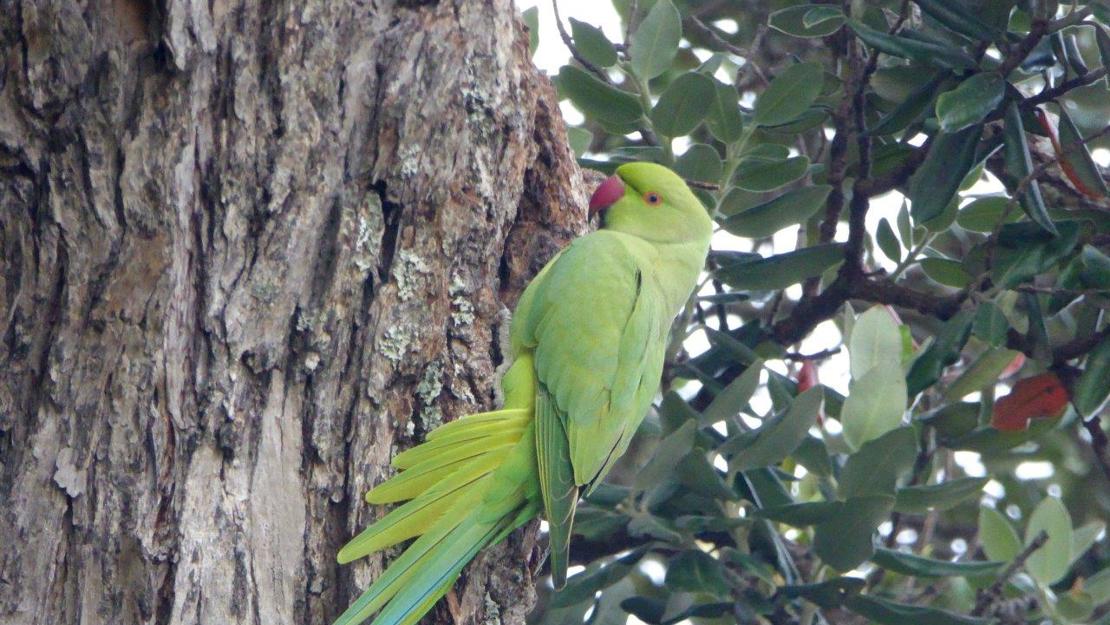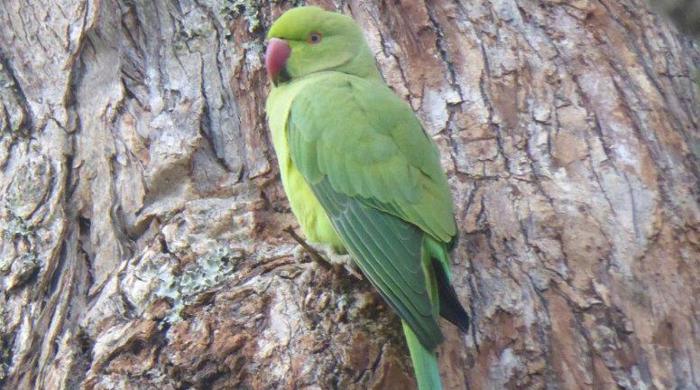Psittacula krameri
Indian ring-necked parakeet
Family: Psittacidae
Origin: Africa, South Asia

Regional Pest Management Plan (RPMP) status
- Aotea — Exclusion
- Hauraki Gulf Controlled Area Notice pest
- Whole region — Sustained control
General description
Parrot 38-42 cm long, usually green. Males have a red band encircling the neck, females have indistinct emerald band. Males have a black bib from the beak to the neck band.
What you need to know
To help protect our environment:
- You must not release any Indian ring-necked parakeet from containment within the Auckland region.
- You must not move any Indian ring-necked parakeet to Aotea/Great Barrier Island group.
- You must not breed, distribute or release any Indian ring-necked parakeet on Aotea/Great Barrier Island group.
- From 1 September 2022, you will not be allowed to breed, distribute or sell any Indian ring-necked parakeet within the Auckland region.
- You are however still allowed to retain any existing individuals you already own. You can also take these animals to the vet, they can move with you if you move house, and you can take them to stay with someone else while you’re on holiday. You just need to keep them securely contained so they can’t escape into the wild.
Habitats
Urban areas, disturbed forest, orchards, gardens.
Impact on environment
Highly aggressive to other species, including native birds and bats. Can displace cavity-nesting species, potential disease vector. Primary production pest for grain crops and orchards.
Control
Management
If you have pet parakeets, make sure they’re securely contained to avoid accidental escapes. If you are no longer able to look after your pet Indian ring-necked parakeet, find someone who is prepared to give it a lifetime home, or contact a relevant pet shop or animal rescue organisation to get it rehomed.
Never release an Indian ring-necked parakeet into the wild – your pet may be unable to find the food and shelter it needs, and it also puts our native species at risk.
If you see an Indian ring-necked parakeet in the wild, record it on iNaturalist or email Auckland Council at pestfree@aucklandcouncil.govt.nz.




